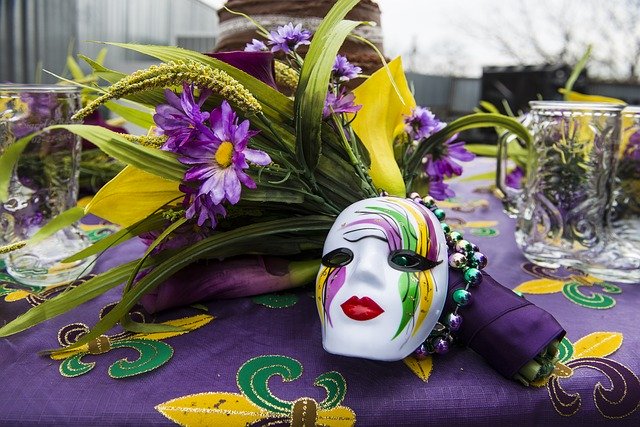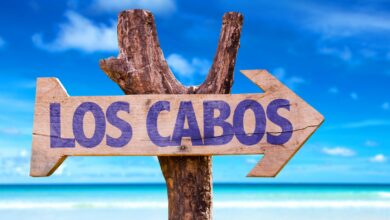
King Cake and Krewes, Beads and Booze – What do these have in common? The Big Easy Mardi Gras, of course! When you hear the words Mardi Gras, the first thing that comes to mind is often the famous annual festival in New Orleans, Louisiana. Interestingly, the very first North American Mardi Gras celebration occurred in what is now Mobile, Alabama. Mardi Gras was brought to the United States between 1699 and 1703 from France by the explorer Pierre Le Moyne d’Iberville. Before arriving in the United States, the celebration dates back to medieval Europe.
Christianity Vs. Paganism – The Festival Timeline
Read More »With a reputation for boundless drinking and other debauchery, it might be surprising for the unfamiliar to learn that Mardi Gras has Christian roots. The celebration, in Christian form, is to gorge on fattening foods before having to give them up for a period of fasting, hence the previously explained terminology.
The celebration starts on Epiphany, which is 46 days before Easter. It then ends on Fat Tuesday before Lent. Lent is a period during which some Christians, most notably the Catholic sector, perform practices such as fasting and repenting, giving something important to them up, in preparation for the Easter holiday. Mardi Gras is the period of celebration and gorging before the period of fasting.
While Christians claim it now, the theory is that Mardi Gras also has pagan roots. The ancient Romans had a period of celebration, called Lupercalia, celebrating their God of Fertility. Due to the more controversial roots, there have been several attempts to outlaw these celebrations over history, and when the Catholic church adopted the celebration, it is believed that they tried to hide the pagan aspects of the celebration.
Mardi Gras Around the World
Whether to celebrate before the coming Lent or to mark the changing of seasons, different festivals for Mardi Gras are celebrated all over the world. Some countries simply have a tradition for making pancakes, while others go above and beyond. Below are some of the largest celebrations:
• Rio de Janeiro, Brazil has a yearly five-day festival, the largest Mardi Gras celebration in the world. It goes back hundreds of years and features parades, street parties, and Samba, which is a ritualistic dance.
• Venice, Italy celebrates the Carnevale of Venice. In Italy, masks and costumes are a very important part of the traditions. The celebration in Italy is an elegant event, as opposed to the wilder events of other countries, with many parades and masquerade balls at high-end hotels. That is not to say mischief is completely abandoned. Pranks are common, and one tradition includes children throwing confetti, flour, and raw eggs at each other.
• Nice, France holds a yearly festival that goes back at least as far as 1294 called Le Carneval Starting as a street festival and the last chance to eat meat, the parade was added upon the visit of a famous King and Queen. Today’s festival has two main shows, the Carnival Parade and the Flower Parade. In addition to the parades, the celebrations include outdoor feasts and masquerade balls. The foods play a large part of the Mardi Gras culture in France. Traditional foods include crepes, waffles, and beignets.
• Barranquilla, Colombia holds one of the largest celebrations, which is a four-day festival full of Columbian and Caribbean cultured music, dancing, shows, and parades. It begins with the Battle of the Flowers and ends with the burial of Joselito Carnaval.
• Port of Spain, Trinidad and Tobago hosts a two-day celebration commonly called the largest street party on earth. It hosts a musical competition called Panarama and includes colorful costumes and dancing.
• Quebec City, Canada holds a Mardi Gras celebration in comparison with the one in the United States. If you would rather head North than South, this could be one to check out.
The New Orleans Festival Traditions
While Mobile, Alabama still holds the claim to the oldest U.S. Mardi Gras celebration, NOLA has the largest. Over the years, Mardi Gras has grown to include many traditions, some of which are explained further below.
Purple, Green, and Gold are the colors that represent Mardi Gras. These colors are believed to have been chosen to resemble a jeweled crown. The crown honored the three wise men who visited baby Jesus on Epiphany. The colors each have a meaning. Purple stands for justice, green for faith, and gold for power. It is common for beads and other trinkets to be thrown out of passing floats in these colors.
King Cake is a Mardi Gras staple. It is a pastry enjoyed on the night of Epiphany to mark the arrival of the three wise men who brought gifts to baby Jesus. It is decorated in the traditional Mardi Gras colors and contains a miniature baby figurine. The person receiving the piece of cake with the baby figurine either gets to be King for the day or is designated to hold the next Mardi Gras gathering, varying by tradition.
Krewes are the groups that hold balls or put on parades. Some of these Krewes have been very secret-society organizations. These Krewes supply the floats that are in the parades. An interesting fact is that it is illegal to wear a mask here any time except Mardi Gras, but if you are on a float in the parade, it is illegal not to wear a mask.
Whether heading to NOLA for Jumbalaya and King Cake, or to France for beignets, any of these Mardi Gras celebrations qualify for a spot on the bucket list. In Mardi Gras speak, Laissez les bon temps rouler, or let the good times roll!





